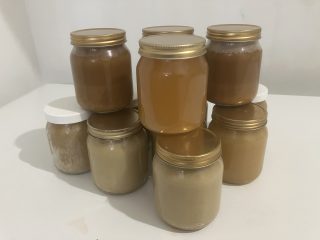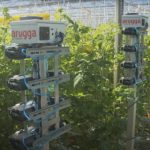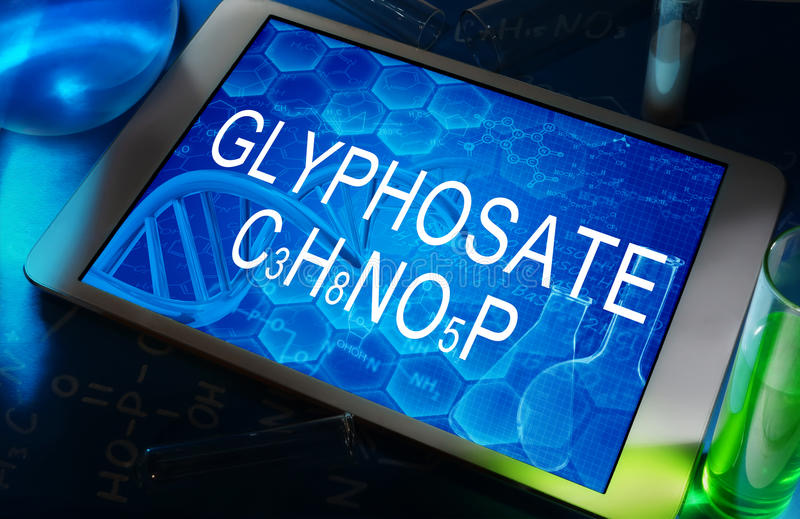 Well, it’s almost December as I write this and the bees are still flying – at least they have been when it’s not been raining! What an awful month November has been for rain, even though we need it badly in our reservoirs and wells. It has meant the bees have had to hunker down for most of the month, doing what might be called a “dry run” for winter (cue oxymoron!). However, there have been some cold snaps which have forced the bees into cluster to both keep themselves and their queen alive.
Well, it’s almost December as I write this and the bees are still flying – at least they have been when it’s not been raining! What an awful month November has been for rain, even though we need it badly in our reservoirs and wells. It has meant the bees have had to hunker down for most of the month, doing what might be called a “dry run” for winter (cue oxymoron!). However, there have been some cold snaps which have forced the bees into cluster to both keep themselves and their queen alive.
On such days, I have been able to start removing honey supers that have been left on the hives to allow storage of excess ivy honey. The thing is, when the bees are in cluster, they are unlikely to want to break out of that cluster and get in my way when they sense the breaking of propolis seals between the boxes. If a bee’s body temperature drops to about 7° it becomes unable to move and will then die as a result. Even though the bees have been flying at temperatures as low as this, they must keep moving, otherwise that’s it, they are done for. So, some ivy honey already removed and bottled ready for the Market on Saturday.
 When it’s been too wet to get outside, I have been concentrating on making wax candles, also for the Market. Since it’s less than a month until Christmas, I’ve been using my Christmas cake and Christmas scene moulds, the candles from which always seem to be very popular.
When it’s been too wet to get outside, I have been concentrating on making wax candles, also for the Market. Since it’s less than a month until Christmas, I’ve been using my Christmas cake and Christmas scene moulds, the candles from which always seem to be very popular.
They look quite festive when bunched up together.
 Apart from those two activities, nothing much else has been going on in my beekeeping world. Oh yes, on Saturday, after the Market we have our Roseland Beekeeping Group Christmas meal together and I have been asked to contribute some quiz questions as part of the entertainment. I’ve tried not to make the questions toohard, as partners and spouses are attending as well, but we’ll have to see how they all do – I should do quite well in this quiz for once!!
Apart from those two activities, nothing much else has been going on in my beekeeping world. Oh yes, on Saturday, after the Market we have our Roseland Beekeeping Group Christmas meal together and I have been asked to contribute some quiz questions as part of the entertainment. I’ve tried not to make the questions toohard, as partners and spouses are attending as well, but we’ll have to see how they all do – I should do quite well in this quiz for once!!
In other news I’ve come across over the past month, I have found the following items of interest.
The first concerns a product with which we are all familiar and which is used in parks and gardens everywhere – Glyphosate. Glyphosate is the most widely used pesticide on the planet.
 Billions of kilograms of the poison have been sprayed across our fields and parks – seeping into our food and our bodies. We haven’t even begun yet to understand the damage it’s caused, either to us or to the planet.
Billions of kilograms of the poison have been sprayed across our fields and parks – seeping into our food and our bodies. We haven’t even begun yet to understand the damage it’s caused, either to us or to the planet.
But thanks to one family of beekeepers in Germany, we’re one step closer to holding pesticide users responsible. The Seusing family saw their small honey business decimated after glyphosate was sprayed in a nearby field.
 Their honey bees carried the contaminated nectar and pollen back to their beehives, forcing them to destroy 4 tons of honey.
Their honey bees carried the contaminated nectar and pollen back to their beehives, forcing them to destroy 4 tons of honey.
Heartbreakingly, the Seusings were forced to shut down their business. So they sued the farmer responsible. And, after a two-year legal battle, they won the case this year, setting an important precedent.
 Now, the Seusing family will receive compensation for some of the honey contaminated with glyphosate – but it won’t be enough to cover their vast legal fees.
Now, the Seusing family will receive compensation for some of the honey contaminated with glyphosate – but it won’t be enough to cover their vast legal fees.
So let us all be aware of how poisonous this chemical is to our wildlife and, ultimately, to ourselves, so we can perhaps find a more natural, perhaps organic way, of controlling the problems that glyphosate is used for.
The second item reveals that Israel has developed the world’s first commercial alternative to bee pollination. Robots are replacing bumblebees as a more efficient and reliable way of pollinating crops!
Arugga, a startup based in Israel, is, for the first time, commercializing robots that mimic the buzzing of a bumblebee. The robot, called Polly, produces strong vibrations to dislodge pollen from the flowers and fertilize them so they can produce fruit. It does what the bumblebee has always done, but with greater success.
Tests in commercial greenhouses in Israel, Australia, and the United States show tomatoes pollinated by Polly had yields up to five percent higher than those pollinated by bumblebees in the traditional way and up to 20 percent higher than manual pollination.
 The company says its robots could entirely replace bumblebees, which are vital for the production of tomatoes, blueberries, potatoes, and many other crops. The Polly is an autonomous ground robot that drives down rows of tomato plants in greenhouses, capturing images of every flower and using artificial intelligence to detect which ones are ready to be pollinated.
The company says its robots could entirely replace bumblebees, which are vital for the production of tomatoes, blueberries, potatoes, and many other crops. The Polly is an autonomous ground robot that drives down rows of tomato plants in greenhouses, capturing images of every flower and using artificial intelligence to detect which ones are ready to be pollinated.
And finally, honey. The UK only produces about 28% of the honey it consumes. However if people stopped buying from supermarkets and bought direct from the beekeeper it would be a step in the right direction and we wouldn’t need to import honey to the extent that we do. Also, there is a boom in scientific studies that enables the production of a sweet liquid that can pass current tests for honey purity. This has resulted in an increase in the volume of fake honey that has recently hit the shelves in our shops in the UK, mainly from China but from other countries as well.
Another example is Manuka Honey, an incredibly sought after product that has gained worldwide attention. It’s full flavour profile, unique health characteristics and scarcity are why it continues to attract positive attention. So, why is Manuka Honey so special?
Firstly, it is only produced in New Zealand and in small quantities due to the short period of Manuka bloom which occurs once a year and for only around 8 weeks.
Secondly, the Manuka tree (Leptospermum Scoparium) is native to New Zealand and grows in remote regions of New Zealand that are difficult for beekeepers to access.
Lastly, the strength of Manuka Honey is determined by the MGO level and has been reported to treat anything from a sore throat to an infected wound depending on the level of strength.
So how do you know the Manuka Honey you’re looking to buy is genuine Manuka Honey?
Like any industry, the Manuka Honey market has been, and is, exposed to non-genuine Manuka Honey products that have appeared over time. In recent years some companies have been caught and prosecuted for marketing adulterated Manuka Honey on retail shelves globally.
So, firstly, it’s from New Zealand!
New Zealand products have a worldwide country of origin recognition, are globally trusted and authentic. Manuka Honey is only produced in New Zealand, so look for “Made in New Zealand” or “Product of New Zealand” on the label. Many honey brands are also licensees of the New Zealand FernMark Licence Programme or the New Zealand Made Licence Programme. The criterion is stringent to become eligible for both Licensee Programs. Both can be found on the label or the company’s website.
Secondly, it’s independently tested.
Analytica Laboratories and Hill Laboratories independently test New Zealand Manuka Honey to ensure each batch meets the export requirements set by the Ministry of Primary Industries (MPI) as well as UMF grading and MGO levels. This information should be evident on the label on the jar.
Thirdly, it’s got the right rating
Many consumers are confused about the labelling of Manuka Honey, it’s ratings, gradings, numbers and acronyms. Confusingly, there are at least six grading systems that are recognised worldwide. While both the UMF and MGO grading and measurement systems are the most common and independent of one brand or another, the remaining are not. Some brands have created their own grading systems with little transparency or clarity on specific grading measurements.
The UMF grading system measures Leptosperin, MGO, DHA and HMF. It is the only grading system that measures all four chemical markers and is considered the strictest and highest graded Manuka Honey measurement system. Therefore, UMF graded honey can be trusted to contain the activity levels expected.
The MGO rating value measures only the MGO levels in honey. This is the milligrams per kilogram (mg/kg) of a unique, sugar molecule called Methylglyoxal (its acronym, MGO). It is found in all honey, however, it is present in a much higher concentration in Manuka Honey.
Fourthly, it’s the right price. Manuka honey is much more expensive than supermarket honey. If it doesn’t feel right it won’t be. Manuka honey that is too cheap and matches the price of supermarket honey or is produced by a brand that is unknown or not reputable should be avoided. You are far better off putting your money into an authentic jar of Manuka honey, knowing that you are getting what you are paying for.
Finally, it is approved by MPI (New Zealand government Ministry of Primary Industries)
All Manuka honey sold for export must be tested by an MPI approved facility in order to measure four chemical markers taken from nectar of the Manuka flower and a DNA marker from the pollen of the Manuka flower. The purpose of these tests is to group Manuka honey into Monofloral Manuka Honey (made by bees foraging on predominantly Manuka flowers) and Multifloral Manuka Honey (made by bees foraging on other flowers as well as Manuka). Manuka honey from UMF 5+ to UMF 15+ exceeds MPI’s export definition of Monofloral Manuka Honey.
 In conclusion, look for Manuka honey that has been harvested and packed in New Zealand, has a UMF rating and is independently tested by Analytica or Hill Laboratories. It will be more expensive than standard supermarket honey and must be tested in order to meet MPI’s export definition for honey sold on the international market.
In conclusion, look for Manuka honey that has been harvested and packed in New Zealand, has a UMF rating and is independently tested by Analytica or Hill Laboratories. It will be more expensive than standard supermarket honey and must be tested in order to meet MPI’s export definition for honey sold on the international market.
I hope that hasn’t over-taxed your grey matter but I am often asked about such things and there is a great lack of knowledge about such matters which are obviously important to us all.
Colin Rees 07939 971104 01872 501313 colinbeeman@aol.com

